On a recent multi-day hike in the mountains, I learned firsthand the importance of proper organization when it comes to a hiking backpack. Despite years of experience as an avid hiker, I made a rookie mistake that almost ruined the entire trip.
At the start of the hike, I immediately noticed that my backpack was heavy and unbalanced. It didn’t take me long to realize that I had made a critical error in packing.
I had placed the heaviest items, including my tent and sleeping bag, at the top of my backpack, throwing off the weight distribution.
The weight of the backpack was pulling me backwards with every step and my shoulders were aching within an hour.
I tried to adjust the straps and redistribute the weight, but it was no use. My mistake in organizing my backpack made the hike much more physically difficult and dampened my spirits mentally.
To make things worse, I had forgotten to bring a rain cover or dry bag for my gear.
The heavy rain halfway through the first day of the hike soaked my sleeping bag and clothing, adding even more weight to my already overburdened backpack.
By the end of the first day, I was exhausted and demoralized. I realized that something had to change.
The following morning, I took some time to reorganize my backpack. I made sure to place the heaviest items at the bottom and used compression sacks to separate and organize my gear properly.
As I resumed hiking, I immediately felt the difference. My backpack was now comfortable and well-balanced, and my shoulders were no longer aching.
The rest of the hike was still challenging, but with my backpack organized properly, I was able to enjoy the stunning scenery and the sense of accomplishment that came with completing the hike.
This experience taught me a valuable lesson about the importance of proper organization when it comes to a hiking backpack.
It’s not just about convenience or accessibility, but it can also have a significant impact on the physical and mental aspects of the hike.
I hope that others can learn from my mistake and take the time to properly organize their backpacks before heading out on a hike.
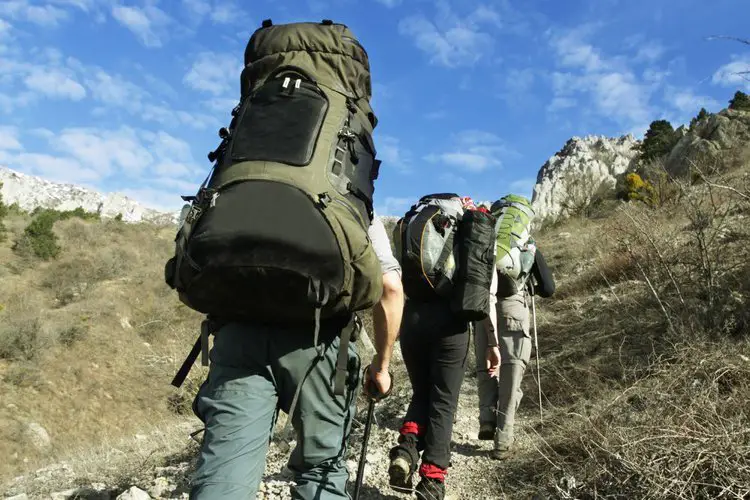
Contents
The Importance of Properly Organizing Your Hiking Backpack
Whether you’re a seasoned hiker or a beginner, how you pack your backpack can make or break your hiking experience.
A poorly organized backpack can lead to discomfort, injuries, and even mishaps on the trail.
One of the most important reasons to properly organize your hiking backpack is to ensure proper weight distribution.
When a backpack is poorly organized, the weight can be unevenly distributed, causing discomfort and pain in the shoulders, back, and hips.
Additionally, an unbalanced backpack can cause you to lose your balance and stumble on the trail, which could result in injuries.
Properly organizing your backpack can also make your gear more accessible. Imagine having to dig through your backpack to find your water bottle or rain jacket when it starts pouring rain.
By organizing your backpack, you can make sure that all your essential items are easily accessible, so you can quickly and efficiently get to what you need without wasting time or energy.
Another key reason to organize your backpack is to protect your gear. Your backpack should not only carry your gear, but also protect it from the elements.
By properly organizing your gear, you can make sure that your sensitive items, such as electronics or clothing, are kept safe and dry during the hike.
Proper backpack organization also allows you to pack more efficiently, saving space and reducing overall weight.
By using compression sacks, packing cubes, or other organizational tools, you can pack your gear more compactly and reduce the overall weight of your backpack.
This can be particularly important for longer hikes or backpacking trips, where every ounce counts.
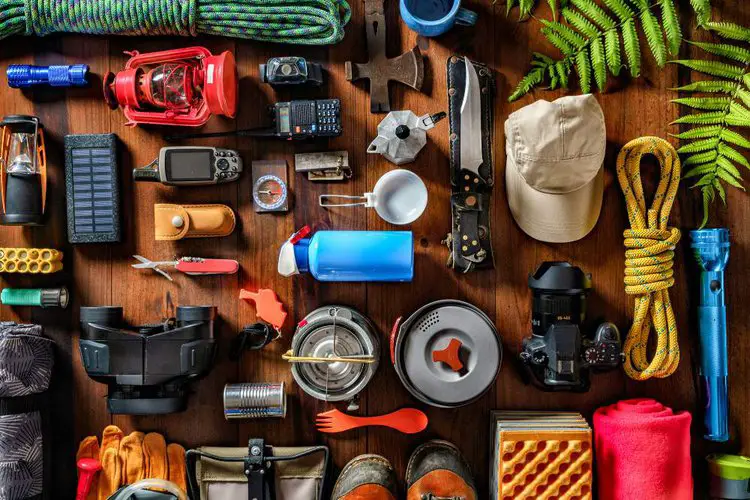
Organize Your Hiking Backpack: Maximizing Comfort and Efficiency
Before we dive into the methods, let’s go over what you should prepare and what you should note when organizing your hiking backpack.
What to Prepare:
If you’re ready to take your hiking game to the next level, it’s time to master the art of packing and organizing your backpack.
Start by reading our article on ‘What To Pack In A Hiking Backpack‘ for a solid foundation, and then learn how to properly organize it for your next adventure.
Some examples:
- A hiking backpack that fits you comfortably and has enough capacity for your needs. Consider the length of your hike and the amount of gear you will need.
- Hiking essentials such as a map, compass, first aid kit, sunscreen, insect repellent, and headlamp or flashlight with extra batteries.
- Water bottles or a hydration system to keep you hydrated throughout your hike.
- Snacks and meals that are easy to carry and provide enough energy for your hike.
- Extra clothing layers, including a rain jacket and a warm hat or gloves, depending on the weather.
- Sleeping bag, tent, and camping stove if you plan to stay overnight on your hike.
…
What to Note
- Pack heavier items closer to your back to distribute weight evenly and maintain balance.
- Keep frequently used items, such as snacks and water, in easily accessible pockets or compartments.
- Use compression sacks or stuff sacks to maximize space and organize your gear.
- Pack smartly and lightly to avoid unnecessary strain on your back and shoulders.
- SAVE 40% MORE SPACE: Frelaxy Compression Stuff Sack is an incredibly simple and practical solution...
- Made of high-quality 210T Tear Resistant Polyester Material, Effectively balances LIGHTWEIGHT (only...
- Considerate Design: 1. Comes with 4 adjustable straps for even compression (2 Strong compression...
Last update on 2023-11-11 / Affiliate links / Images from Amazon Product Advertising API
Now that you know what to prepare and note, let’s explore different methods for organizing your hiking backpack based on the type of hike you’re planning.
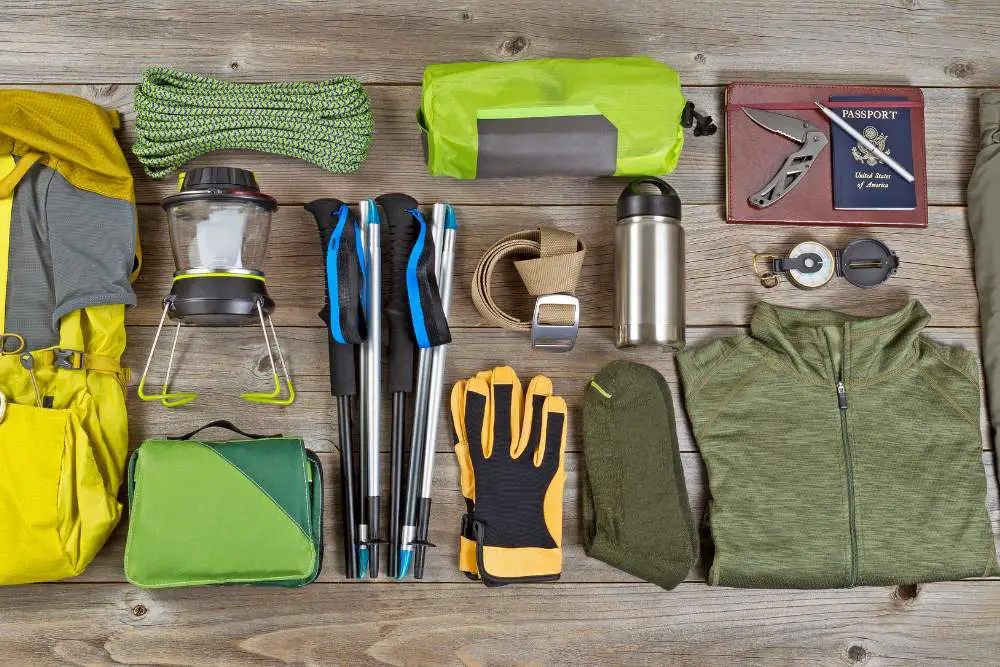
Day Hikes
For day hikes, you don’t need to carry as much gear as overnight or multi-day hikes.
However, it’s still important to organize your backpack for comfort and accessibility.
Step-by-Step Instructions:
- Start by packing your heavier items at the bottom of your backpack, such as your water bottles or hydration system.
- Place your extra clothing layers, including a rain jacket, in the middle of your backpack.
- Keep your snacks, map, and other essentials in the top pockets or compartments of your backpack for easy access.
- Use compression sacks or stuff sacks to organize your gear and maximize space.

For day hikes, you generally don’t need as much gear as you would for longer trips, but it’s still important to organize your backpack for easy access and weight distribution.
Firstly, we suggest packing your heaviest items closest to your back, as this will help with weight distribution and keep the backpack from pulling you backwards.
This is especially important for day hikes, where you may not have a lot of gear but still need to distribute the weight evenly to avoid discomfort or injury.
We also suggest keeping your frequently used items, such as snacks, maps, and sunscreen, in the top or outer pockets of your backpack.
This makes it easy to access them quickly and efficiently without having to dig through your backpack.
Another reason to organize your backpack for day hikes is to protect your gear from the elements.
Even on a short hike, unexpected weather changes can occur, so it’s important to have a rain cover or waterproof bags for your electronics or other sensitive gear.
Overall, organizing your backpack for a day hike will help you have a more comfortable and enjoyable experience on the trail.
By keeping your heaviest items close to your back, your frequently used items easily accessible, and your gear protected, you can focus on the beauty of nature and enjoy the trail ahead.
Overnight Hikes
For overnight hikes, you’ll need to carry additional gear, including a sleeping bag, tent, and camping stove.
Organizing your backpack for an overnight hike can be a bit more challenging, but it’s crucial to ensure that you can access everything you need when you need it.
Step-by-Step Instructions:
- Start by packing your heaviest items, such as your tent and sleeping bag, in the bottom of your backpack.
- Next, pack your camping stove and cookware in the middle of your backpack.
- Keep your extra clothing layers and rain gear in a separate compartment or at the top of your backpack.
- Store your food and snacks in easily accessible pockets or compartments.
- Use compression sacks or stuff sacks to organize your gear and maximize space.
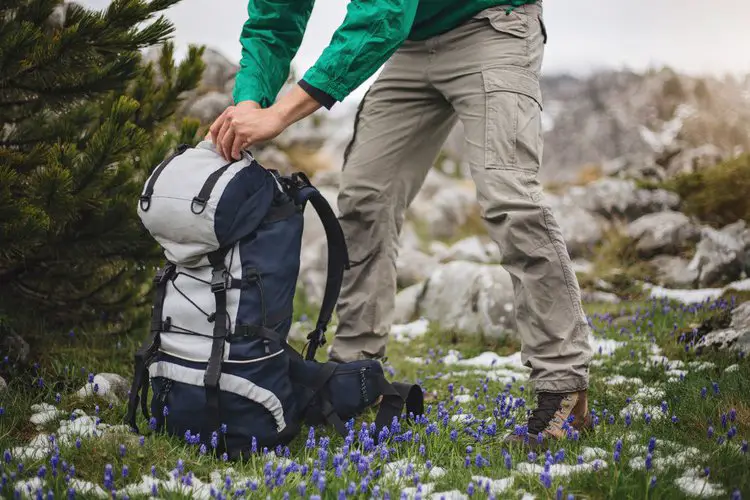
When it comes to overnight hikes, you will need to carry more gear and supplies than for a day hike, so organizing your backpack is crucial. Here are some reasons why we suggest organizing your backpack in a specific way:
First, we recommend packing your gear in a logical order, with frequently used items near the top or in outer pockets for easy access. This includes items such as your map, compass, headlamp, and snacks.
Second, we suggest packing your tent, sleeping bag, and pad near the bottom of your backpack, as they tend to be the heaviest and will provide a stable base for the rest of your gear.
This will help keep your center of gravity low and prevent the backpack from throwing you off balance.
Third, we suggest organizing your clothing and other gear in separate waterproof stuff sacks, which can help keep your items dry in case of rain or other wet conditions.
It’s also helpful to separate your dirty clothes from your clean ones to maintain hygiene and prevent odor buildup.
Finally, it’s important to distribute the weight of your backpack evenly, so that you don’t strain your back or shoulders while carrying it.
This means packing your heaviest items close to your back, as well as using the compression straps on your backpack to secure the load and prevent it from shifting.
- Colorful straps help you to differentiate your luggage at once, save the time, keep the trip happy.
- Heavy duty luggage strap, secure buckle closure ensures security, the belt can be adjustable and fit...
- Buckle was made of durable poly & plastic material. It does not snap when bent inward or outward.
Last update on 2023-11-11 / Affiliate links / Images from Amazon Product Advertising API
Multi-Day Hikes
For multi-day hikes, you’ll need to pack even more gear, including additional clothing layers and food.
Organizing your backpack for a multi-day hike requires careful planning and attention to detail.
Step-by-Step Instructions:
- Start by packing your heaviest items, such as your tent and sleeping bag, in the bottom of your backpack.
- Next, pack your camping stove and cookware in the middle of your backpack, followed by your extra clothing layers and rain gear.
- Keep your food and snacks in a separate compartment or at the top of your backpack for easy access.
- Use compression sacks or stuff sacks to organize your gear, such as separating clothing layers by type (such as base layers, mid-layers, and outer layers).
- Make sure to also pack any necessary personal items, such as toiletries or medication, in a separate compartment or bag.
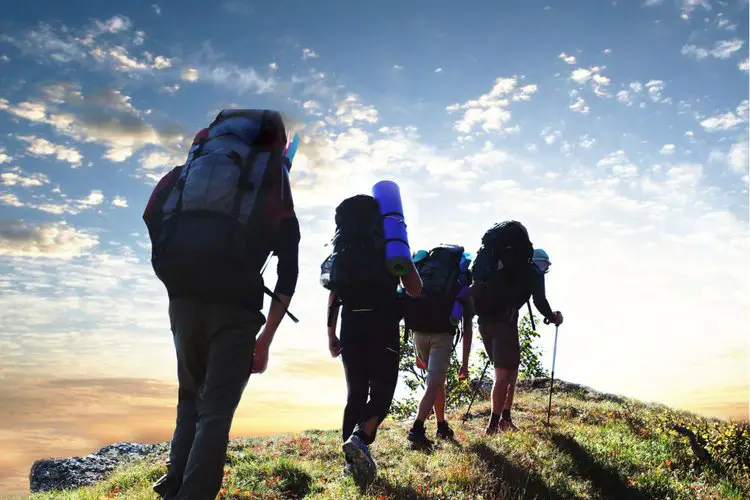
Multi-day hikes require even more gear and supplies than overnight hikes, so organizing your backpack is even more important to avoid discomfort or injury.
Here are some reasons why we suggest organizing your backpack in a specific way:
First, we recommend dividing your gear into three categories: essentials, comfort items, and luxury items.
Essentials include items such as your map, compass, first aid kit, and extra food, while comfort items might include a camp chair or extra clothing layers. Luxury items might include a camera or book.
Second, we suggest packing your gear in the order that you’ll need it throughout the day, with frequently used items near the top or in outer pockets. This will make it easier to access your gear without having to unpack everything.
Third, we suggest organizing your clothing and gear in separate waterproof stuff sacks, just like for overnight hikes, to keep your items dry and organized. It’s also helpful to separate your clean clothes from your dirty ones.
- Versatile: Keep your gear 100% dry during any activity - kayaking, fishing, boating, backpacking,...
- Lightweight and Durable: Made with 190D diamond ripstop polyester, our waterproof dry bags are...
- Full Set Option: Choose between 1 pack or 3 pack with 5L, 10L, and 20L sizes - perfect for any...
Last update on 2023-11-11 / Affiliate links / Images from Amazon Product Advertising API
Finally, it’s important to distribute the weight of your backpack evenly, just like for overnight hikes.
This means packing your heaviest items close to your back and using the compression straps on your backpack to secure the load and prevent it from shifting.
Overall, organizing your backpack for multi-day hikes will help you stay comfortable and avoid discomfort or injury while on the trail.
By dividing your gear into categories, packing in the order that you need it, and keeping your items organized and dry, you can focus on enjoying the beauty of nature and the adventure ahead.
Additional Tips:
- Use a rain cover or dry bag to keep your gear dry in case of rain or water crossings.
- Place your hiking boots or shoes on the outside of your backpack using a bungee cord or clip to free up space inside.
- 【Quality Material 】Made of super elastic rubber rope, providing strong elasticity, strong and...
- 【Prevent Scratches】The ABS-coated hook prevents your car from being scratched, and the rope's...
- 【Crocodile Mouth Tarp Clips】Contains 4 tarpaulin clips, which can clamp and release the...
Last update on 2023-11-11 / Affiliate links / Images from Amazon Product Advertising API
- Don’t forget to consider the weight distribution of your backpack when organizing it. Make sure to evenly distribute the weight between the left and right sides of your backpack and adjust the straps to ensure proper fit and comfort.
Before you leave
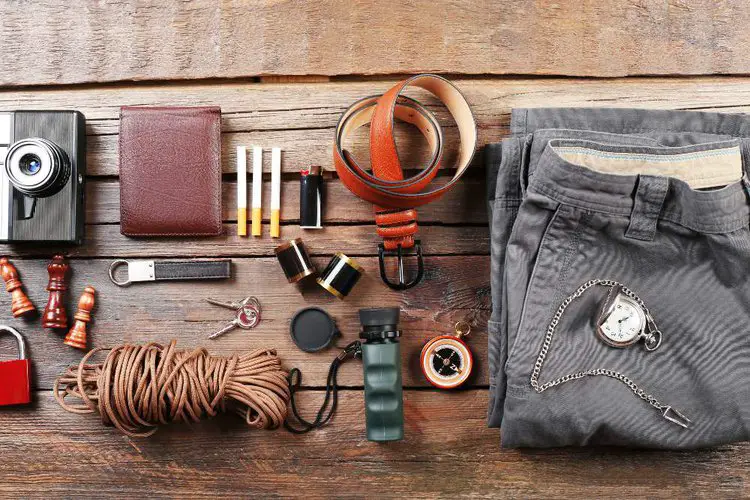
In conclusion, organizing your hiking backpack is an essential aspect of being prepared for a hike.
By following the steps outlined in this article, you can effectively organize your backpack for day hikes, overnight hikes, and multi-day hikes.
Remember to pack smartly and lightly, prioritize comfort and accessibility, and use compression sacks or stuff sacks to maximize space and organize your gear.
With a well-organized hiking backpack, you can enjoy your hike with peace of mind and comfort.





